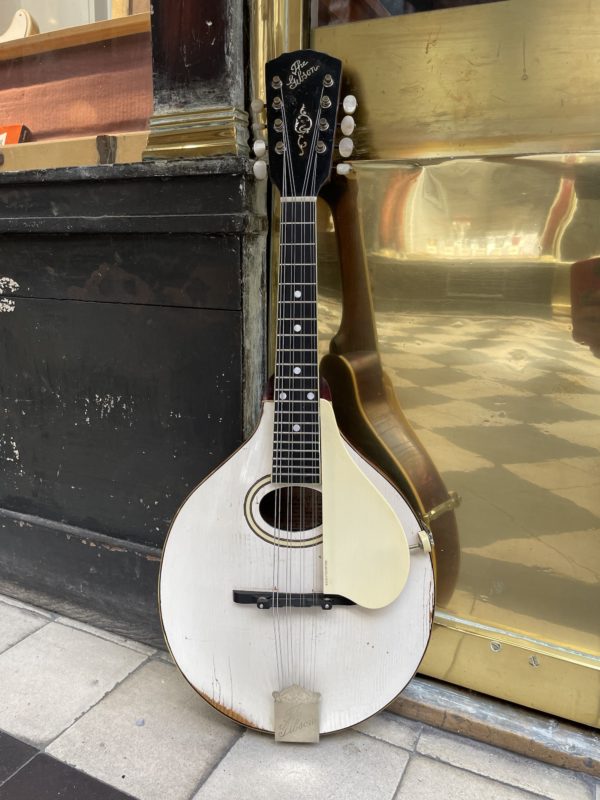Bluegrass
THE BLUEGRASS MANDOLIN
There is this advertisement drawn for the Gibson Mandolin-Guitar Co. in 1908, as funny as it is bewildering: it depicts an anthropomorphic Gibson F mandolin sweeping « potato-bug » bowl-back mandolins off the edge of the « eternal progress platform » and into the « Dead Sea », using a broom bearing the inscription « New Era » – some of the potato-bugs are named after Gibson competitors of the time: Regal, Brandt, Waldo, Bay State… As far as subtle advertising goes, we may have seen better but the message is crystal clear: enough with the old construction mandolin, the new American mandolins are born and here to stay!
It is in fact to the pioneering genius of Orville Gibson (1856 – 1918) that we owe these first mandolins of a new kind, strictly fitted with metal strings, with a flat body whose unique feature was that it’s top and back were carved like a violin’s – it was Gibson’s belief that the traditional bowl-back mandolins had been « constructed of too many separate parts, bent or carved, glued or veneered » and that the substantial amount of bracing present on these instruments hindered their acoustic qualities. The very first mandolins built by Orville Gibson and described in his 1898 patent bluntly titled Mandolin had their head, neck and rims carved from a single piece of wood so as to « leave the layergrains of the wood in the same posit-ion they occupied in the natural growth » (sic). The top and back, carved from separate pieces of wood, were then fitted and glued onto the rim. Early Orville Gibson-built mandolins and instruments in general (being the mad genius he was, he ventured into guitars, harp-guitars and even a one-off zither guitar) are fantastically ornate, covered in pearl and tortoiseshell inlays – ironically, some of the decorated pickguards draw immensely in style from the designs used on Neapolitan-made Vinaccia mandolins, the very same O. Gibson disparaged so much!
Over the years and through the work of several Gibson employees (notably George Laurian, who developed and patented a number of advancements on the instrument’s design), the mandolin was constantly improved and refined. It is to Lloyd Loar (1886-1943) (although his real contribution is often overstated, and mainly based on clever marketing and horn-tooting) that we owe the final touches made to the instrument initiated by Orville Gibson. During his short stint at Gibson in the early twenties, he fine-tuned what would become the two flagships of the house: a guitar with f-holes, the Gibson L-5 model, and a mandolin with f-holes, the Gibson F-5 model.
It is this exact mandolin that is considered to this day as the Stradivari of bluegrass mandolins, a branch of country music that takes its roots in European musical traditions from the Appalachian region. This musical movement was spearheaded by Bill Monroe (1911-1996) and his band The Blue Grass Boys, in reference to his home state of Kentucky, also known as “The Blue Grass State”.
The American mandolin is not limited only to the Gibson brand – though we could satisfy ourselves of them – but all the others draw their inspiration from it! Like high-end archtop guitars, American mandolins require craftsmanship and expertise in lutherie that does not make it an instrument accessible to all builders.



